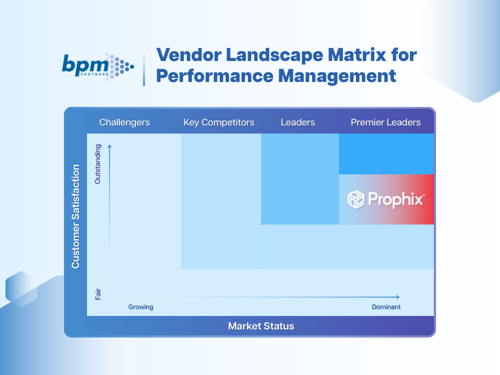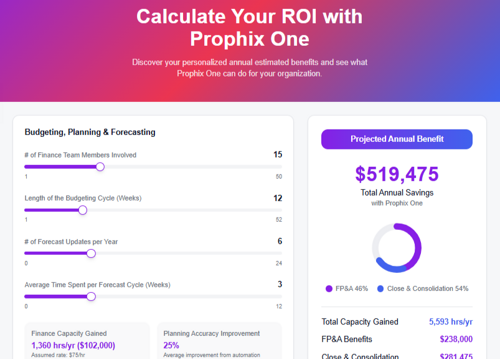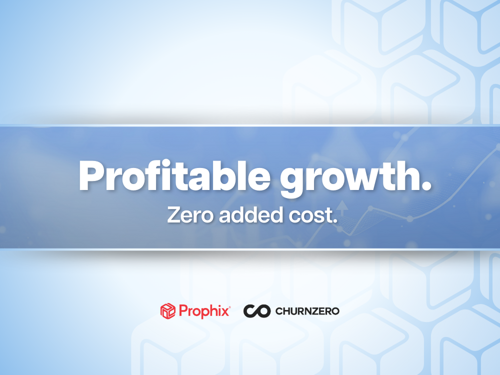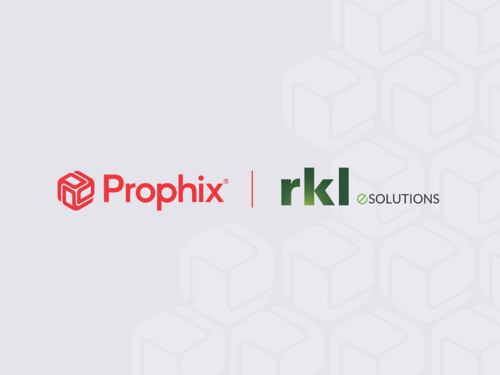Download the BPM Partners Whitepaper
The guide to top ESG metrics for finance teams
For finance teams, measuring and monitoring ESG metrics isn't just about compliance; it’s about aligning business performance with stakeholder expectations, operational efficiency, and credibility.
March 20, 2025In today's rapidly evolving business landscape, ESG metrics and reporting have become a cornerstone of responsible corporate management. These metrics offer a tangible way to track and demonstrate progress in sustainability, equity, and ethical governance, and are essential for long-term success.
For finance teams, measuring and monitoring ESG metrics isn't just about compliance; it’s about aligning business performance with stakeholder expectations, operational efficiency, and credibility. This guide will walk you through the essential ESG metrics, their importance, and how finance teams can effectively manage them.
What are ESG metrics?
ESG metrics are quantifiable measures used to evaluate a company’s performance in environmental sustainability, social responsibility, and governance practices. These metrics provide data-driven insights into how an organization manages risks and opportunities related to these critical areas.
While there is no universal set of ESG metrics, what companies measure often depends on their sector, strategic goals, and stakeholder demands. For example, a manufacturing firm might focus on greenhouse gas (GHG) emissions and waste management, while a tech company might prioritize diversity, equity, and inclusion (DEI) metrics.
Here are a few examples of ESG metrics:
- Environmental metrics: Carbon footprint, water usage, renewable energy adoption.
- Social metrics: Living wages, gender pay equity, employee engagement scores.
- Governance metrics: Board diversity, anti-corruption policies, shareholder voting rights.
Qualitative vs. quantitative ESG metrics
ESG metrics can be broadly divided into two categories: qualitative and quantitative.
- Qualitative ESG metrics focus on descriptive information. These might include a company's policies on human rights, climate commitments, or governance frameworks. While they offer insights into intent and approach, they are less measurable.
- Quantitative ESG metrics involve numerical data, such as the percentage of renewable energy used, employee turnover rates, or total GHG emissions. These metrics provide a clear picture of progress and are essential for benchmarking.
Both types serve distinct purposes. While qualitative metrics help in understanding a company’s strategies, quantitative metrics are crucial for tracking progress and making data-driven decisions.
Why are ESG metrics important?
ESG metrics quantify and enable the measurement of progress towards your ESG goals. Here are a few examples of why ESG metrics are so important.
1. Grounding commitments in data
ESG metrics make lofty goals tangible by converting them into measurable outcomes. For example, a commitment to reduce carbon emissions becomes actionable when tracked as Scope 1, 2, and 3 emissions reductions.
2. Tracking progress
With accurate data, companies can monitor their progress, identify areas for improvement, and optimize strategies to meet ESG goals. This agility can be a competitive advantage.
3. Build transparency and credibility
Stakeholders, including investors, customers, and regulators, demand transparency. Accurate ESG metrics enhance trust and credibility, showing that a company is not only setting goals but also meeting them.
4. Benefits to stakeholders
Proven ESG performance can attract investors, improve customer loyalty, and foster employee satisfaction. By rooting ESG efforts in data, companies make themselves more resilient and adaptable to future challenges.
ESG frameworks and metrics
What are ESG frameworks?
ESG frameworks are guidelines developed by global organizations to help companies measure, report, and standardize their ESG performance. Frameworks serve as a blueprint for creating comprehensive ESG reports and ensure alignment with industry best practices.
Key ESG frameworks:
- Task Force on Climate-related Financial Disclosures (TCFD): Focuses on climate-related financial risks and opportunities.
- Global Reporting Initiative (GRI): Provides standards for sustainability reporting across industries.
- Sustainability Accounting Standards Board (SASB): Offers sector-specific standards for ESG disclosure.
- International Sustainability Standards Board (ISSB): Aims to create globally consistent sustainability disclosures.
ESG frameworks offer several benefits, including simplifying your ESG reporting process, ensuring alignment with stakeholder expectations, and providing comparability across organizations and industries.
Examples of ESG metrics and how to measure them
The ESG framework you adopt will guide which metrics you focus on. Below are examples categorized by environmental, social, and governance aspects.
Environmental ESG metrics examples
Environmental metrics track an organization's impact on the planet.
Greenhouse Gas Emissions
- What it measures: GHG emissions encompass all forms of greenhouse gases released into the atmosphere, categorized as Scope 1 (direct emissions from owned or controlled sources), Scope 2 (indirect emissions from purchased electricity, steam, heating, or cooling), and Scope 3 (emissions across the value chain, such as supplier and customer activities).
- Why it matters: Reducing emissions is critical for combating climate change and meeting global sustainability goals.
- Metric examples: Annual CO2 emissions (metric tons), reduction percentage year-over-year.
Air pollution
- What it measures: Emissions of harmful pollutants such as nitrogen oxides (NOx), sulfur oxides (SOx), and particulate matter (PM).
- Why it matters: Air pollution impacts public health and contributes to environmental degradation.
- Metric examples: Total particulate matter (PM) emissions, NOx levels (tons).
Energy management
- What it measures: Efficiency and sustainability of energy use, including total consumption and reliance on renewable sources.
- Why it matters: Optimizing energy usage reduces costs and lowers carbon footprints.
- Metric examples: Total energy consumed (kWh), percentage of operations powered by renewable electricity.
Waste management
- What it measures: Generation, treatment, and disposal of waste, including hazardous and non-hazardous materials.
- Why it matters: Proper waste management minimizes environmental impact and improves operational efficiency.
- Metric examples: Total recycled waste (tons), volume of hazardous waste properly disposed.
Nature usage
- What it measures: The consumption and replenishment of natural resources, such as water, land, and raw materials.
- Why it matters: Responsible resource usage ensures long-term sustainability and reduces environmental degradation.
- Metric examples: Total water withdrawn versus replenished (gallons), percentage of sustainably sourced raw materials.
Social ESG metrics examples
Social metrics assess how a company treats its employees, customers, and communities.
Diversity, Equity, and Inclusion (DEI)
- What it measures: Representation and inclusivity within the workforce, particularly in leadership roles.
- Why it matters: DEI fosters innovation, enhances employee satisfaction, and reflects societal progress.
- Metric examples: Percentage of women or minorities in leadership positions, overall workforce diversity ratio.
Pay equity
- What it measures: Fairness in compensation across demographics.
- Why it matters: Pay equity promotes workplace fairness and prevents discriminatory practices.
- Metric examples: Gender pay gap, ratio of CEO-to-median employee pay.
Employee engagement
- What it measures: Employee satisfaction, morale, and advocacy for the organization.
- Why it matters: Higher engagement correlates with better performance, retention, and productivity.
- Metric examples: Employee Net Promoter Score (eNPS), turnover rates.
Labor practices
- What it measures: Fair treatment of workers, including rights to collective bargaining and workplace conditions.
- Why it matters: Ethical labor practices enhance company reputation and ensure compliance with regulations.
- Metric examples: Percentage of workforce covered by collective bargaining agreements, ratio of full-time to contract workers.
Health and safety
- What it measures: Workplace safety and employee well-being.
- Why it matters: Safe environments improve productivity and reduce risks of legal and financial penalties.
- Metric examples: Total recordable incident rate (TRIR), adoption of health and safety policies.
Human rights
- What it measures: Adherence to human rights standards across operations and supply chains.
- Why it matters: Protecting human rights minimizes reputational risks and ensures ethical operations.
- Metric examples: Number of reported human rights violations, percentage of suppliers audited for compliance.
Governance ESG metrics examples
Governance metrics focus on corporate leadership, ethics, and accountability.
Ethics and anti-corruption policy
- What it measures: Implementation of policies to prevent unethical behavior and corruption.
- Why it matters: Strong ethics build trust with stakeholders and minimize regulatory risks.
- Metric examples: Annual anti-corruption training participation rate, presence of whistleblower policies.
Quality of governing body
- What it measures: Effectiveness and inclusivity of the leadership team.
- Why it matters: Diverse and skilled leadership fosters better decision-making.
- Metric examples: Percentage of independent directors, diversity ratio of the board.
Board diversity
- What it measures: Representation of gender, age, and cultural diversity within the board.
- Why it matters: Diverse boards reflect modern values and improve governance.
- Metric examples: Ratio of female-to-male board members, average board tenure.
Compliance and risk management
- What it measures: Adherence to regulations and the ability to manage risks proactively.
- Why it matters: Ensures operational resilience and prevents legal liabilities.
- Metric examples: Number of compliance violations, frequency of risk assessments.
How to track your ESG metrics with Prophix
Accurate ESG reporting is essential for making informed decisions and maintaining credibility. Prophix’s ESG software can streamline this process, helping finance teams measure, monitor, and report ESG performance efficiently.
Here’s a look at how Prophix’s ESG software can help you level up your reporting:
- Centralized data management: Consolidates ESG data from various sources into a single platform.
- Custom reporting: Tailor your ESG reports to align with specific frameworks like TCFD or GRI.
- Real-time insights: Set up dashboards and analytics to monitor progress dynamically.
Understanding and tracking ESG metrics is no longer optional—it’s a business imperative. By adopting a data-driven approach and leveraging a financial performance platform like Prophix One, finance teams can align their ESG goals with measurable outcomes, ensuring transparency, accountability, and long-term success.
Level up your ESG reporting with Prophix.





